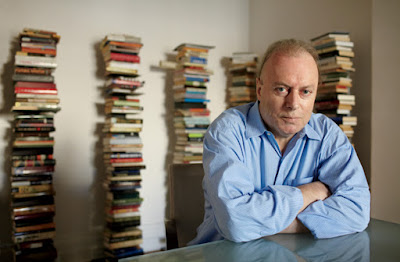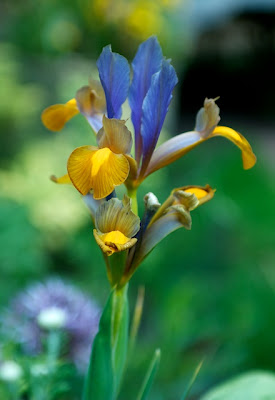This has been a rich week, full of a wide variety of thoughts and activities, but let me waste no time in bringing you up to date on the condition of the MacPherson struts on my car, referred to in the last blog post.
In short, I learned yesterday on a return visit to the garage that they are indeed sick and on their way to the scrapyard. While on some cars they are allowed to wobble a bit, Vauxhall has advised that this is not normal on our car. Although in the interests of safety I will take the car back to the good mechanics next week for the problem to be fixed, my wife and I are pondering how to manage our motoring needs and finances. I have just had to renew the road tax as well, which, suffice it to say, is considerably more than it used to be, particularly since our car is ten years old and therefore deemed to be more polluting than some. An endless roundelay of expense…
In my darker moments I suspect that traffic calming measures (or—if we look behind the veil of weasel words—those annoying bumps in the road so beloved of our and other local councils) are sponsored by the manufacturers of shock absorbers and suspension systems, since a number of mechanics I have spoken to attribute greater wear and tear on such systems to “sleeping policemen” and the like. In case I am starting to sound like Jeremy Clarkson, let me assure you that I welcome slower speeds in built-up areas. I just wish we could be more like the French, for example, and use chicanes rather than humps to enforce speed limits and protect people and wildlife in our towns and cities. So much more elegant, daaaahling.
 |
A chicane.
Note the possibilities for landscaping and a measure of beautification of the built environment. Drivers of emergency vehicles prefer them too. |
Our daughter came home from university at the weekend to reunite with some friends as well as with us. We were also joined by my mother-in-law for a couple of days and by our son and daughter-in-law on Sunday. Full house and roast beef for lunch. The house went quiet again on Monday as my wife took her mother away for a couple of days in Canterbury, also giving our daughter a lift back to uni. I was therefore on my own from Monday to Wednesday, enjoying left-over meat and veg from the weekend.
I was not entirely alone though as I was reunited on Monday with my laptop, which had been with the geeks for over a week having a new hard drive installed. Mercifully all my data and applications were salvageable, but the process of “cloning” the original drive was very slow as the poor old thing was really ailing. All now seems well and here I am typing away, not any more having to wait for minutes at a time for my words to appear on screen. I also had the dubious company of The Sopranos and watched several episodes back to back, finally reaching the end of Season 3.
Tuesday morning saw me engaged in the first conference call I have experienced in about 30 years. I have in recent weeks been asked to be the English language moderator for a discussion forum for Waldenström’s sufferers that has been
set up here. The website is a joint venture between the “rare disease” organisations EURORDIS (in Europe) and NORD (based in the USA) and you will see that a number of uncommon conditions are represented. The WM “area” has just gone live, so the moderators had a discussion and briefing over the phone this week: Paris, London, Belgium and The Netherlands all talking together. Early days, but we hope this will be a useful resource for sufferers, particularly in countries where there is little mutual support readily available and limited information or research. The site has facilities for translation of posts and articles into English, French, German, Spanish or Italian. If we can forget the troubles of the Euro just for a moment, this is surely a good example of what close international cooperation can offer.
Talk of research brings me to strands of thought that have occupied me much over the last couple of days. I have recently become increasingly interested in the ideas of
Iain McGilchrist, in particular as set out in his (demanding) book
The Master and His Emissary. McGilchrist is both a scholar of English and a distinguished psychiatrist. His thesis in the book (which I am still reading) is that the left hemisphere of the brain specialises in specifics, categorisation and detail, whereas the right brain is more “big picture”, creative, visionary. He goes on to argue that the left brain has become progressively dominant; some even describe it as “bullying” the right hemisphere. As a result we have experienced society and government becoming more controlling and “bean counting”, with the arts and humanities progressively marginalised in mainstream thinking and planning. You can download the introduction to the book from his website, but a
wonderful graphic overview (and the man’s voice) can be found
here.
For those of us disquieted by the increasing subservience of academia—sciences as well as arts and humanities—to the demands of the market, such observations strike a loud chord. Yesterday I received the termly magazine from my old university, which contained three articles on the theme “Whither the Humanities? Uncovering a global crisis in our midst”. These articles made fascinating reading at a time when academics in the quest for funding are being called upon to justify “the impact” of their research. The point is made powerfully several times in the articles that any division between arts and sciences is in point of fact artificial; also that distinctions between pure and applied research in the sciences are of little meaningful value. One example given is of Bertrand Russell’s philosophical investigations into logic and language: what could be more tweedy and wreathed in a fog of donnish pipe smoke? The truth is however that such work “paved the way for the artificial languages essential to computer science”. If carried to their natural conclusions, the prescriptions of some economists, politicians and civil servants would reduce us to drones, cogs in the mechanisms of production, to be discarded once we have ceased to be of economic value.
 |
Bertrand Russell (1872-1970).
You will have to imagine the smoke. |
I am passionate that we must resist such tendencies and make the case for the value of excellence across all academic disciplines, otherwise we will wake up to discover that we have created a whistling desert considerably more comprehensive than the Taliban did when they blew up the
Buddhas of Bamiyan. As one of the academics quoted (anonymously) in the university magazine put it: “If you believe knowledge is expensive, try ignorance”.
Yesterday I picked up my blood test result from last week and was buoyed up to see that, though inevitably approximate, the measurement of my haemoglobin had just made it into double figures. Things are looking up. Before I went to the surgery I had coffee and a typically animated and wide-ranging conversation with my friend, C, touching among other things on writing and the matters I have been obsessing about above. As we came out of the café we saw, sitting at a table outside, a very well known rock musician, a legend as it happens.
I have found myself thinking much about this man since and seeing him as representing a fusion of science, technology and art. Rock music rests on, among other things: our knowledge of electricity and acoustics, electronics and amplification; the heritage of the guitar, with all its associated craftsmanship and the knowledge and manipulation of diverse materials; musical theory and its associated physics; the architecture of performance spaces and their skilled construction. All the great instruments and all the great venues in the world are however nothing without the musician: his vision and creative drive; the development of his skill and technique, allied to his heart and life experience. Rock music is not new, for heaven’s sake: it rests on the accumulated knowledge of centuries, millennia even.
Impact? Don’t make me laugh.
 |
Jack Black as Dewey Finn in School of Rock (2003),
demonstrating powerfully the richness of popular music's heritage and the complexities of its interactions with many different facets of life and society.
So there. |

































